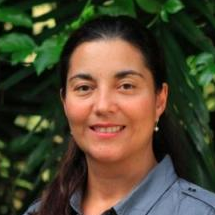Forest Responses to Large-Scale Wind Disturbance
A special issue of Forests (ISSN 1999-4907). This special issue belongs to the section "Forest Ecophysiology and Biology".
Deadline for manuscript submissions: closed (15 September 2018) | Viewed by 31991
Special Issue Editors
Interests: tropical soil ecology; biology and biogeochemistry; disturbance effects; wood and litter decay; role of soil organisms in ecosystem processes and functions
Special Issues, Collections and Topics in MDPI journals
Special Issue Information
Dear Colleagues,
Large wind storms play a critical role in forests, and this type of disturbance is initially most prominent in the canopy but affects the whole vertical structure of the forest ecosystem including belowground processes. Large wind storms occur globally, affecting temperate and tropical forests, and here we take this opportunity of producing a special issue on this subject to document results about the effects of large-scale wind events on forest ecosystems. Hurricanes, typhoons, and cyclones are large-scale wind events that result in whole-ecosystem changing events when they pass over forests. Wind disturbance results in leaf and branch loss, and biomass transfer from the canopy to the ground. Such events trigger a succession of events across the whole forest profile, affecting subsequent biodiversity and ecosystem processes. Given the current and expected changes resulting from global climate change, we believe this is a critical time for such a compilation of studies. This Special Issue provides an opportunity to better provide for needed scientific studies that can help inform forest management in light of increased wind disturbance, as well as outline new frontiers of research. We encourage contributions to the Special Issue from all fields of large-scale wind disturbance, including experimental studies, monitoring approaches and models, and general promotion of knowledge and adaptation strategies, management, and future development of forest ecosystems.
Dr. Grizelle GonzálezDr. Aaron B. Shiels
Guest Editors
Manuscript Submission Information
Manuscripts should be submitted online at www.mdpi.com by registering and logging in to this website. Once you are registered, click here to go to the submission form. Manuscripts can be submitted until the deadline. All submissions that pass pre-check are peer-reviewed. Accepted papers will be published continuously in the journal (as soon as accepted) and will be listed together on the special issue website. Research articles, review articles as well as short communications are invited. For planned papers, a title and short abstract (about 100 words) can be sent to the Editorial Office for announcement on this website.
Submitted manuscripts should not have been published previously, nor be under consideration for publication elsewhere (except conference proceedings papers). All manuscripts are thoroughly refereed through a single-blind peer-review process. A guide for authors and other relevant information for submission of manuscripts is available on the Instructions for Authors page. Forests is an international peer-reviewed open access monthly journal published by MDPI.
Please visit the Instructions for Authors page before submitting a manuscript. The Article Processing Charge (APC) for publication in this open access journal is 2600 CHF (Swiss Francs). Submitted papers should be well formatted and use good English. Authors may use MDPI's English editing service prior to publication or during author revisions.
Keywords
- Extreme Wind Events
- Disturbances
- Cyclone/Hurricane/Typhoon
- Biodiversity
- Carbon Dynamics
- Ecosystem Services
- Forest Regeneration
- Forest Management






